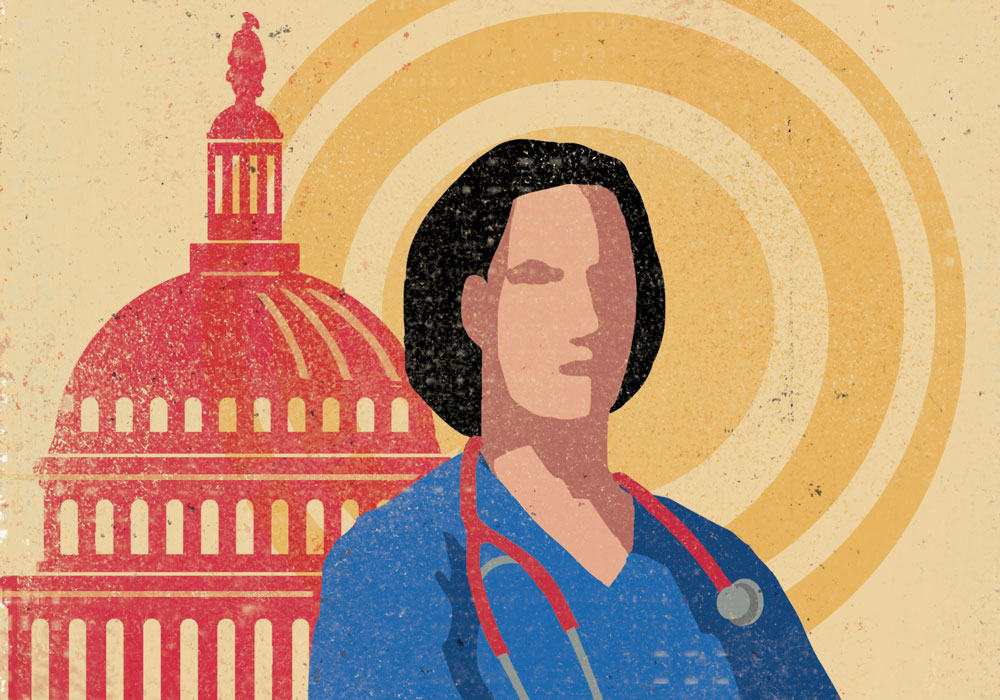On January 25, 2019, President Trump announced a deal to end the longest U.S. government partial shutdown in history—35 days of closed public places and programs, furloughed or unpaid federal employees, and an apprehensive American nation. What was its impact on health policy and, more specifically, cancer care?
What Was Affected
Although the Department of Health and Human Services (HHS) received its 2019 funding before the shutdown, the strain the impasse caused had a ripple effect across the country. Emergency health agencies, biomedical research labs, and clinical trials continued, but ancillary agencies and programs were temporarily closed.
Medicare and Medicaid payments continued. Patient care at the National Cancer Institute was maintained. Uninterrupted Centers for Disease Control and Prevention oversight for public health outbreaks remained. U.S. Food and Drug Administration (FDA) regulatory oversight for food safety and product management was ongoing.
But releases of information, updates, and new health opportunities were not on schedule. Although current clinical trials were maintained under previous funding allocations, new cancer treatment trials and investment into oncologic research were limited in the federal agencies affected by the furlough. It was an odd time in Washington, DC, and across the country for federal workers and those who frequently interact with the government.
Compromise in divided government means that everyone can’t get everything they want every time. The President’s proposal could be signed into law to quickly reopen the government. Everyone has made their point—now it’s time to make a law.
Efforts to Reopen Government
In an attempt to prevent any interruptions in coverage, Democratic leaders in the U.S. House and Senate sent a joint letter to HHS Secretary Alex Azar and Treasury Secretary Steven Mnuchin with a plea for the Trump administration to work within its jurisdiction to bolster their respective agencies as they handle healthcare payments. The intent of sending the letter was to raise awareness for and offer options that the government could provide to families. They added that “states often face time constraints in seeking these waivers, and application reviews, calculations of pass-through funding, and other essential functions of the application process are at risk of being significantly delayed due to the shutdown.”
Congressional concern was that during the federal shutdown, healthcare-related government offices would be affected by lost personnel and services. The agencies’ purview was still to find a mechanism that would ensure that Americans, through no fault of their own, were not adversely affected by the political situation.
We are right now pursuing legislation to prevent this from ever happening again by saying that if there’s a lapse in the budget and the budget is not approved, then a continuing resolution would be automatic at that point. It’s the federal workers who are standing up for America, and they want to go to work and want to do their jobs and get paid for it.
A Plan for the Future
All federal agencies now have contingency plans in place for the routine possibility of even a short weekend shutdown. In the case of HHS, the plan is formally defined as: “More than 76% of HHS employees would be retained and 24% would be furloughed. These percentages vary among HHS’s agencies and offices. FDA will continue core functions to handle and respond to emergencies to protect consumers and patients from harmful products and address other critical public health issues.”
Since the 1970s, when a new congressional budgetary process was enacted, the federal government has temporarily shut down 21 times because of the Antideficiency Act, which prevents the federal government from spending funding in the absence of appropriations for anything other than “the safety of human life or the protection of property.” These parameters bind the government to operate with only essential personal under strict guidelines and in cases of emergency. Thus, shutdowns are notoriously expensive to enact, confusing to understand their circumstances, and duplicative in re-establishing normal routines.
ONS Perspective
ONS joins the efforts of many healthcare coalitions and the Society’s own legislative agenda in persuading the U.S. Congress to support funding for issues such as palliative care, oral drug parity, and drug affordability. In such strange situations as a government shutdown, the voice of the oncology nurse must remain constant. Advocacy does not rest and perhaps is more important in uncertain times.
Now that a funding agreement has been met and regular order returned, lessons must be learned about the outcome of intransience. However, as of press time, another funding deadline, future fiscal allocations, and more federal requisitions are still on the horizon. And, “sequestration-level spending caps are set to return in FY 2020. If appropriations bills violate those caps, then across-the-board cuts will be triggered.” Instating permanent resolutions is unlikely, but the opportunity to prevent another interminable federal shutdown is possible with some prudence. However, until voters determine a different outcome, uncertainty is part of democracy.






